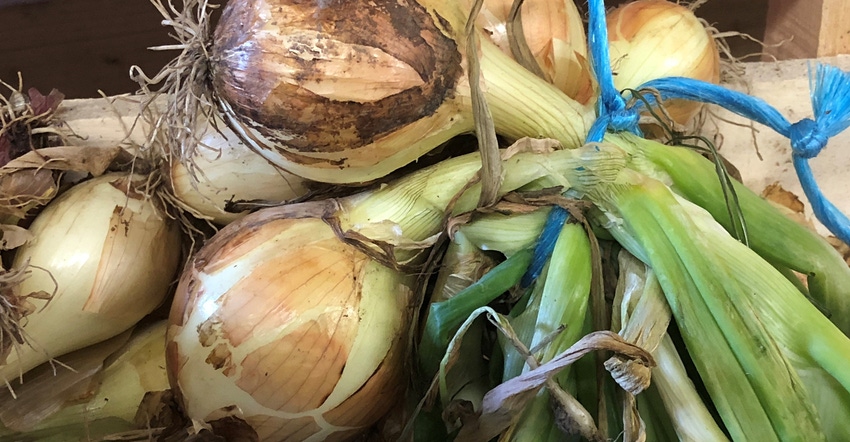
What do onion samples analyzed in Illinois, a high-tech research lab in Canada, and Midwestern corn and soybeans have in common? Researchers believe this unlikely triangle could lead to answers for shoring up plant cell walls against drought and disease stress.
Onions were chosen because you can peel away a single layer of cells and see changes in cell walls. Graduate students working with Karen Tanino at the University of Saskatchewan also analyzed onion samples at the Advanced Photon Source lab in Illinois.
When calcium mixed with water is added to greenhouse onions, they take up calcium, which is isolated in cell walls. Research with other plants indicates boron is important to cell walls, too. Shoring up cell walls won’t be a silver bullet for drought and disease stress, but it could be a first line of defense, Tanino says.
Weed control by robot
Pauline Canteneur with FarmWise told Todd Fitchette of Western Farm Press that demand for robotic weed removal services in vegetables reached unprecedented levels. The startup company recently received $45 million in new investment funds.
FarmWise machines utilize machine learning to physically remove weeds cheaper than hand crews. The next generation of machines could be PTO-driven or tractor-mounted, and owned by farmers. The company now sets sights on weed detection in corn and soybeans. See FarmWise to ramp up with $45M investment.
Electric farm trucks?
Western Farm Press Editor Tim Hearden says Ford Pro allowed ag reporters to test-drive the Ford F-150 Lightning fully electric pickup recently. Several winegrowers in California are driving these trucks in a pilot project.
Base models selling for $39,400 can go 230 miles before charging, while extended-range pickups selling at up to $90,000 can go 300 miles. Production began in April. With batteries placed underneath the pickup, more storage can be found in the front trunk, or “frunk.”
Skeptics wonder about performance in tough farm environments. If you’ve got a 240-outlet, charging should be straightforward, but it may mean rearranging lunch to charge your truck. Other electric trucks coming soon include the Chevrolet Silverado EV, GMC Sierra EV, Lordstown Endurance and Toyota Tacoma EV. See Will electric trucks work on the farm?
Change in potash production?
Mike Ferguson, CEO of the Canadian startup Gensource Potash Corp., tells Willie Vogt of Farm Progress they’re planning a new potash mine near Tugaske, Saskatchewan. It would be the first new potash mine since the Belle Plaine Mine opened in the 1960s and cost more than $4.5 billion. It produced 2.8 million metric tons annually, later expanding to 4 million metric tons.
Gensource intends to build a modular plant, producing 250,000 metric tons. Since it’s a smaller plant, Gensource partnered with Helm Fertilizer to take all production. The modular plant is scalable up to a million tons. See Startup Gensource retools potash mining.
Turn sensor data into weather forecasts
Carlos Gaitan, co-founder and CEO of Benchmark Labs, says his company can turn local information related to microclimate into personalized, field-level weather forecasts. Currently, the company is doing it for specialty growers in California, charging about $500 for each sensor reporting per year. The company sees the opportunity to create field-level forecasts for row crops. Visit benchmarklabs.com. See Company turns in-field sensor data to precision weather information.
About the Author(s)
You May Also Like




